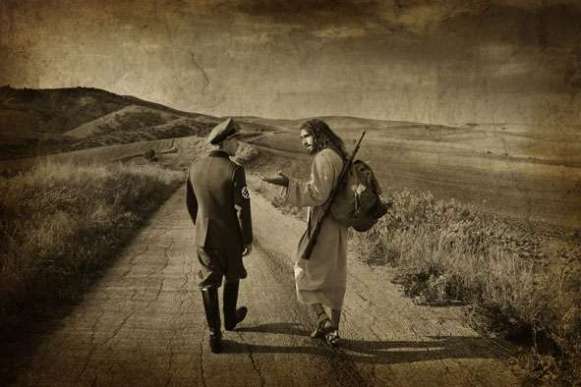Today in our Religion and Media class we spent the day talking about and reflecting on what constitutes the church. We offered up different ideas and analogies about the church. Among the many different aspects of church that we talked about the question about does the church function for the individual or for the community caught my attention.
As most good Lutherans would respond, the answer is both. The church functions as the space for individuals to be nurtured and cared for, and to hear about the unconditional and saving power and love that God has for all of creation. The church also functions as the space for those who need to receive this good news (which is all of us!) and are thereby strengthened and transformed to become a part of this good news and to share that news with the rest of the world.
As we look to our culture, in particularly here in the United States, I believe that there is a fundamental debate taking place in our political sphere around this issue of individual and the community. It would be foolish of us to think that this can easily be categorized as a red or blue thing, or a democrat and republican thing. Yet, sadly, this is how it is being framed in our daily dialogues(if we can really call them that) with each other.
There was an interesting article that I read talking about five things that the government does better than you. In this piece the author is advocating that things that are better managed when people have access to more information, and that the more information that is shared better decisions can be made.
Some people are willing to put their trust into that system, while others are a bit more skeptical. There’s a great example of this at the end of this piece, discussing a decision made by the people of Colorado Springs in regards to taxes. Two pieces that I want to pull out from that are,
“…[B]y combining our resources, we as a community can actually accomplish more than we as individuals.”
“That prevailing sense that government won’t take care of our money, that brings somebody to the conclusion that, I’ll take care of mine. You go figure out how to take care of yours, because we don’t trust government to do it for us.”
I think I can agree with both statements, and here’s how. I do believe that as a community we can accomplish more than we can as individuals. I’m often reminded of this when I’ve been on mission trips and reflected on the human hours invested in a particular ministry or project and realizing that I would have only accomplished a fraction of the work on my own.
I also agree that people want a sense of accountability and trust when they share their resources with another, and I feel that can sometimes be lost in a larger system. This sense of “I’ll take care of mine, you go figure out how to take care of yours,” is seen through a large inclusive lens from my perspective. I want to collapse this sense of you and mine and replace it with ours. I have been given things that are entrusted to me, but I may think it’s mine, as a person of faith, I know that it is God’s and as a part of those who claim and confess that all is God’s I need to share with mine, yours, and anyone else’s.
So here’s a question worth pondering, is the Church too big to fail? How do the functions of the individual and the community impact your faith and the way you engage the world?




